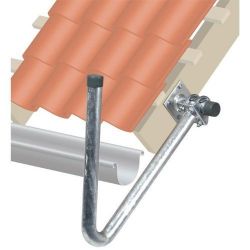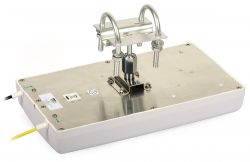Friends,
How is it with antenna polarization on BTS?
There is information that for LTE you need an antenna with slant polarization, that is + 45 ° and -45 °. They differ from H / V polarization antennas only by the mount rotated by 45 °. Such antennas are commercially available, but the ones with the vertical / horizontal polarization mount still do not disappear.
Do you know of any official (or not) sources confirming that they actually use skew? If so, whether the use of a slant depends on:
1.frequency - in the sense that the polarity is different at 800 and at 900, 1800, 2100, 2600MHz?
2nd technology - different for 3G and different for LTE? *
3. the launch date of a given BTS - in the sense that they introduced the slant recently?
4. operator?
*) which would cause the signal to drop when the modem switches from LTE to 3G
The only source I have found so far is a copy of the btsy.eu website which no longer exists:
https://web.archive.org/web/20140214150206/http://www.btsy.eu/anteny.html
... but it is nowhere said that every operator uses a skew, nor is there any detail on either band or technology.
[added:]
I called the operators' hotline - the result is known:
Plus - they don't know, there were some guesses
Play - they don't know, they advised to experiment, but ordered to send an email
Orange - I don't know the chat on the website, I still have to call, but from a different phone than I have, because from Orange you have to pay for the call to Orange Customer Service
T-Mobile - they do not know and send technical assistance to the paid number 708-477-242 (2.10 PLN / min + VAT)
It would be good to ask a technician or a masters mountaineer, or an engineer, as long as they are not prohibited from speaking, but I don't know anyone.
Thanks in advance for any information.
How is it with antenna polarization on BTS?
There is information that for LTE you need an antenna with slant polarization, that is + 45 ° and -45 °. They differ from H / V polarization antennas only by the mount rotated by 45 °. Such antennas are commercially available, but the ones with the vertical / horizontal polarization mount still do not disappear.
Do you know of any official (or not) sources confirming that they actually use skew? If so, whether the use of a slant depends on:
1.frequency - in the sense that the polarity is different at 800 and at 900, 1800, 2100, 2600MHz?
2nd technology - different for 3G and different for LTE? *
3. the launch date of a given BTS - in the sense that they introduced the slant recently?
4. operator?
*) which would cause the signal to drop when the modem switches from LTE to 3G
The only source I have found so far is a copy of the btsy.eu website which no longer exists:
https://web.archive.org/web/20140214150206/http://www.btsy.eu/anteny.html
... but it is nowhere said that every operator uses a skew, nor is there any detail on either band or technology.
[added:]
I called the operators' hotline - the result is known:
Plus - they don't know, there were some guesses
Play - they don't know, they advised to experiment, but ordered to send an email
Orange - I don't know the chat on the website, I still have to call, but from a different phone than I have, because from Orange you have to pay for the call to Orange Customer Service
T-Mobile - they do not know and send technical assistance to the paid number 708-477-242 (2.10 PLN / min + VAT)
It would be good to ask a technician or a masters mountaineer, or an engineer, as long as they are not prohibited from speaking, but I don't know anyone.
Thanks in advance for any information.







